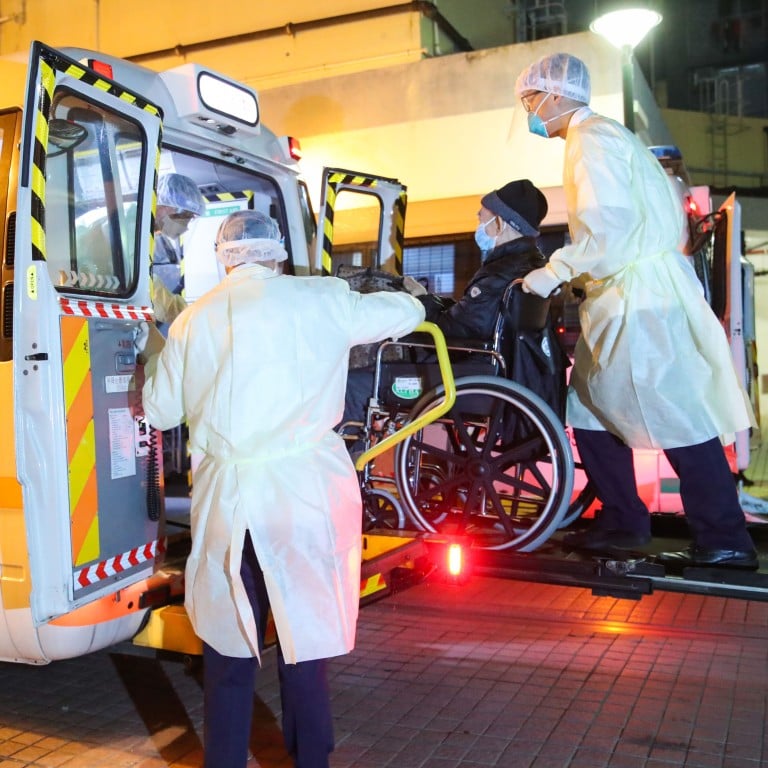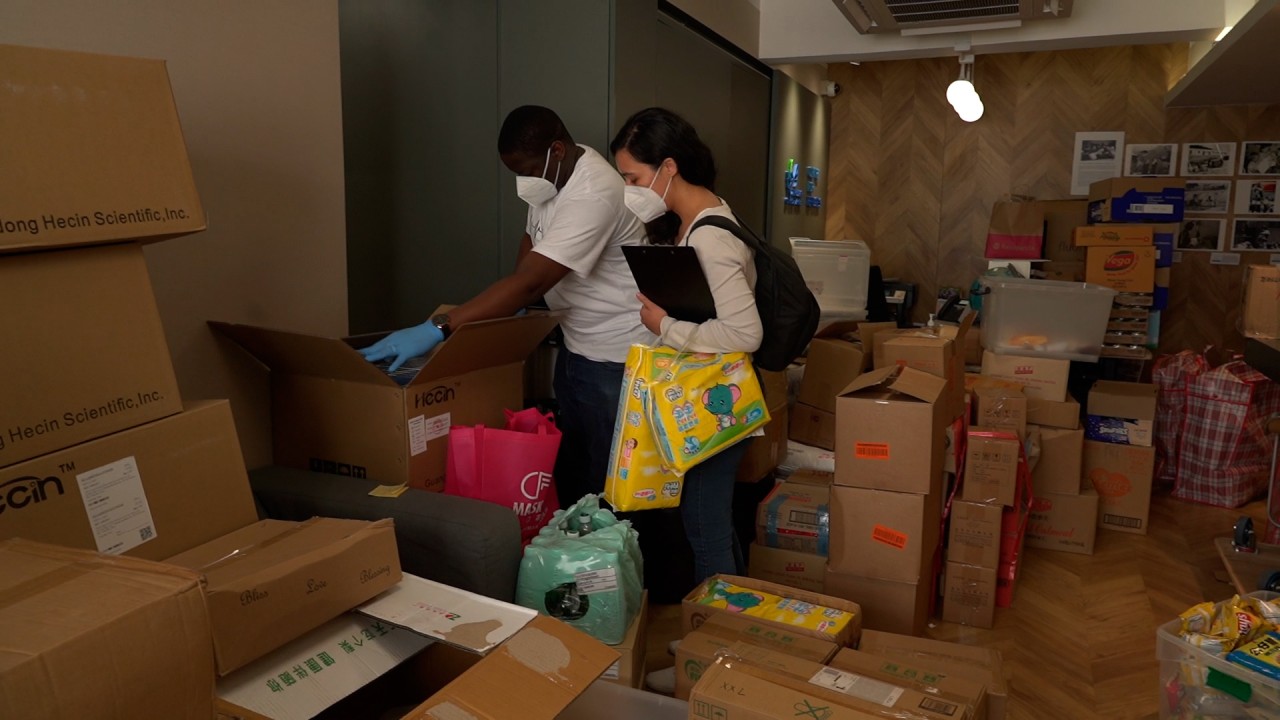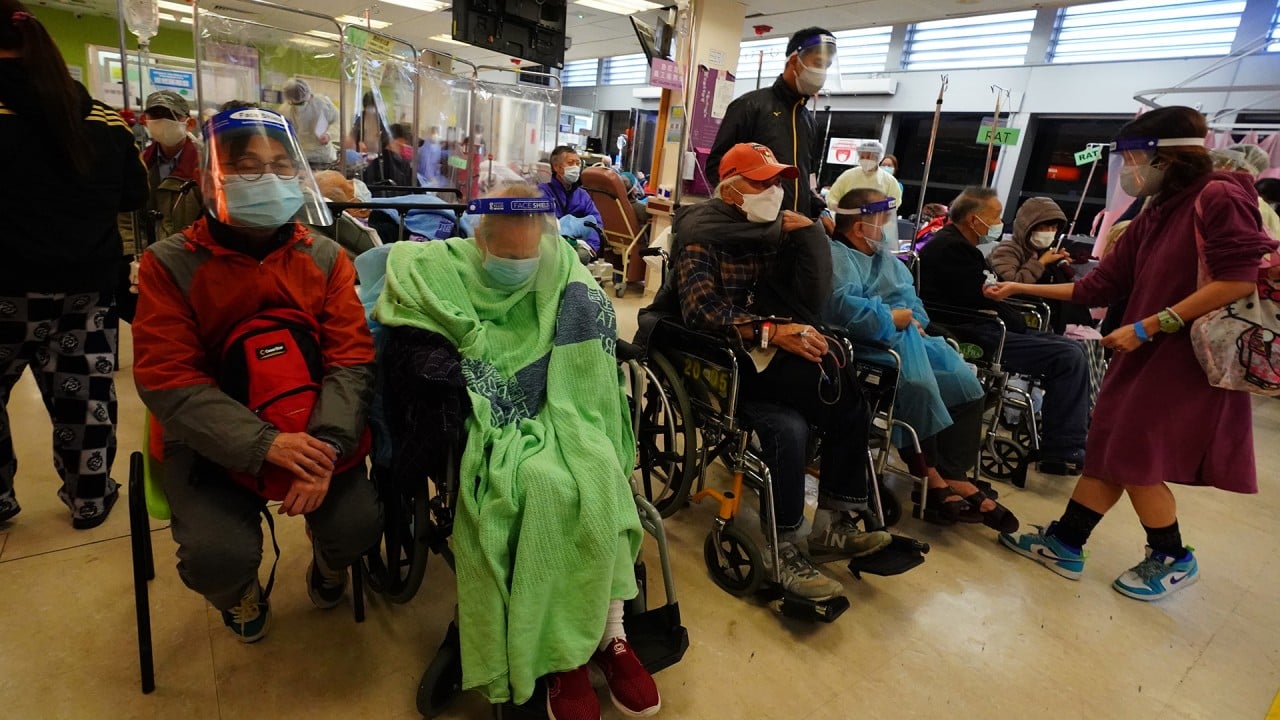
Authorities may move mass Covid-19 screening to April so they can focus on care for elderly patients as Hong Kong logs more than 30,000 new cases
- City leader Carrie Lam will also meet representatives from public and private hospitals to discuss allocation of resources
- Hair salons, which have been shut since February 10, can welcome back customers on Thursday, but use of vaccine pass will be mandatory
The source revealed top officials were considering the shift in strategy as a result of the changing situation of the alarming number of fatalities among the old, saying: “Now the priority is to reduce the death rate and care for the elderly.”
Lam herself had said some form of mass testing could take place in March, but the source said: “The Hong Kong government only put March as a planning parameter. The central government has never set a time frame.”
On Tuesday, Lam met representatives of the Hong Kong Private Hospitals Association on their role in supporting the fight against Covid-19 and they were scheduled to hold talks with health minister Sophia Chan Siu-chee on Wednesday, the insider revealed.
Private hospitals are under pressure to take up a greater role in treating patients after Chinese Vice-Premier Han Zheng, the state leader overseeing the city’s affairs, criticised them for their alleged reluctance in handling some of the overflow from public hospitals.
To better cope with the backlog of patients, Queen Elizabeth Hospital will dedicate its resources, including its estimated 2,000 beds, to exclusively treating cases, becoming the third public facility to do so, according to another source.
Hong Kong must boost efforts to win ‘people’s war’ against Covid-19: expert
Gleneagles Hospital revealed it would allocate an extra 50 beds for patients transferred from the hospitals. More than 100 patients have been transferred to the private facility to receive treatment and surgeries.
Union Hospital also gave an extra 50 beds to non-Covid-19 patients transferred from public hospitals for non-urgent surgery.
Authorities also announced that hair salons, which were ordered to close on February 10, would be allowed to reopen on Thursday.
But other existing social-distancing measures, including a ban on public gatherings of more than two people and private gatherings involving more than two households, would remain in place until March 23.

On the internal discussions to delay universal testing, insiders told the Post that carrying out the exercise with so many cases emerging every day would be “useless”, given the city still did not have an adequate number of isolation facilities.
Sources had previously said the exercise could begin on March 26, but the exact timing and details of a lockdown had yet to be finalised.
But the insider said authorities were still considering whether testing should begin in late March or late April, adding: “Both options are still open.”
The government on Monday launched an online portal for residents who test positive using rapid kits to log the results and drew 17,236 people, according to Dr Albert Au Ka-wing from the Centre for Health Protection.
Hong Kong university data model predicts peak of coronavirus fifth wave
Of those cases, 14,715 were valid, while the remainder were infections previously known to health authorities through nucleic acid tests or they mistakenly entered their information repeatedly. But only 2,018 residents completed the reporting process and were issued with isolation orders.
They were added to the 28,475 infections discovered through PCR tests, for an overall tally of 30,493 cases on Tuesday.
“There was a time about 200,000 people were queuing at the platform last night. This number covers those who only came to browse the website as well,” Au said, adding that those who had tested positive via rapid tests between February 26 and March 5 were given one week to upload their results.
Au explained that self-reporting positive RAT results was voluntary but highly encouraged because the information meant authorities could keep track of case numbers, which could have implications for policymaking.
Logging the cases also allowed health authorities to certify infections and issue or update relevant documents to patients, including medical records that could affect their vaccination schedules, he noted.
“There will be legal implications after submission of the documents … They will be classified as a confirmed Covid-19 case under our system and we will issue an isolation order to them under the Cap 599A regulation and issue quarantine orders for their household contacts,” Au said.
“So it is necessary for them to provide their identity card and rapid antigen test image so we can verify their information … and issue those orders.”
Health authorities will randomly select people who registered a positive RAT result on the government platform to undergo compulsory nucleic acid testing.
Four-fifths of Hong Kong low-income child carers report high stress from outbreak
A courier will deliver a test kit to the person, and they are required to return a sample within 20 minutes. The fine for non-compliance is HK$10,000 (US$1,280) and the person will also receive a compulsory testing order. Failure to comply with the order will result in a fine of HK$25,000 and up to six month’s jail.
The city’s tally of confirmed cases since the start of the pandemic stood at 527,260.
The Hospital Authority recorded 160 fatalities in the past 24 hours, involving patients aged between four and 105. Of those, 116 had no vaccination records.
Another 127 people, aged 56 to 102, died earlier but the cases were only reported on Tuesday due to a backlog. Four chronically ill patients aged 32 to 85 who had not been admitted to hospital also succumbed earlier. The number of Covid-related fatalities stood at 2,578.
According to the latest modelling projection by the University of Hong Kong, led by government pandemic adviser and its medical dean Professor Gabriel Leung, the daily caseload peaked on March 4 and is expected to drop below 1,000 on April 23 and decrease further into the double digits by mid-May.
But Professor David Hui Shu-cheong, another government adviser, cautioned that uncertainties remained with the epidemic trend.
“Many people have been using RAT in the past few weeks. Some of them have not reported their test results, and some might never report them,” Hui said, adding that residents might not report their status unless they had an incentive, such as securing sick leave.
The government needed to monitor the number of overall cases for another two weeks to get a better idea of where the infection trend was heading, he said.
Hong Kong’s Queen Elizabeth Hospital ‘to reserve its beds for serious Covid-19 cases’
The development came as Dr Liang Wannian, leader of the National Health Commission’s Covid Response Expert Team, urged elderly care facilities to adopt a “closed-loop” approach with restrictions on staff movement to reduce deaths.
Since arriving in the city last week, Liang has urged the government to concentrate on “four focuses”, with the main goal being reducing deaths.
In an interview with state media outlet Xinhua on Monday, Liang proposed a closed-loop arrangement involving tight restrictions on the movement of personnel and residents of care homes as a way to cut cases and deaths among the elderly.
“Care workers at the nursing homes are not under closed-loop management currently. Can [Hong Kong] consider implementing it to cut transmission links?” he said.
In mainland China, staff at hospitals treating Covid-19 patients work in closed loops, living on site without going home on rotations that last up to two months at a time.
“Hong Kong cannot choose to lie down,” Liang continued, pushing back against the notion of living with the virus. “If it lies down, the harms will be unlimited. We have to struggle against the virus, to control it and cut its transmissions, to protect life as much as possible.”
He noted that he had already urged the Hong Kong government to pursue “effective synergy” among various departments and facilities in the effort to reduce severe illnesses and deaths rather than having separate entities “fighting alone”.
As of Tuesday, more than 86 per cent of elderly care homes, or 690 in total, had logged cases during the fifth wave, with some 16,200 residents and 4,470 workers infected. More than two-thirds of homes for the disabled, or 230 facilities, have also had cases, with 4,800 residents and 1,710 staff infected.
Au said the death rate of people who had received two or more doses of a Covid-19 vaccine was 0.06 per cent and 1.52 per cent for those who were unvaccinated or had taken only one jab. For those aged 80 or above, the death rate was 2.12 per cent and 10.32 per cent, respectively.
Hong Kong property agency temporarily closes offices amid Omicron outbreak
The vaccination rate among the elderly lags far behind that of the general population. In a Facebook post on Monday night, civil service chief Patrick Nip Tak-kuen said authorities aimed to vaccinate all suitable seniors in care homes with at least one Covid-19 shot within two weeks via outreach services, with the long-term goal of providing them with a total of three doses.
On Monday, the United States’ Centres for Disease Control and Prevention raised Hong Kong’s travel risk level to four, or “very high”, with US nationals advised to refrain from visiting.
In his interview, Liang reiterated that the government should focus on isolating residents who tested positive, pooling resources, consolidating expert advice and improving treatments.
The universal testing plan, he said, was a piece of “system engineering” that involved careful planning on how to conduct screenings, collect and transport specimens and manage those who tested positive, along with their close contacts.
Separately, Matilda International Hospital said on Tuesday that it would begin treating Covid-19 patients with mild symptoms at its outpatient facilities. Matilda would be the seventh private hospital to provide treatment to Covid-19 patients.
However, the hospital is not able to admit Covid-19 inpatients due to its lack of negative pressure rooms. It will however aim to reserve half of its general beds for non-Covid patients transferred from overburdened public hospitals.
CUHK Medical Centre is currently the only private facility with designated beds for Covid-19 patients.
Meanwhile, the first two batches of temporary care workers from the mainland arrived in Hong Kong, according to the Social Welfare Department.
The workers will undergo three days of training before helping care for elderly residents, people with disabilities and others, who are confirmed or suspected of being infected, at temporary care centres, community isolation facilities and quarantine centres.
The government intends to bring over about 1,000 care workers in total to ease manpower shortage.
Additional reporting by Fiona Sun






